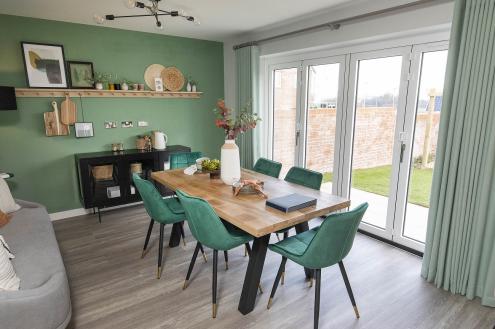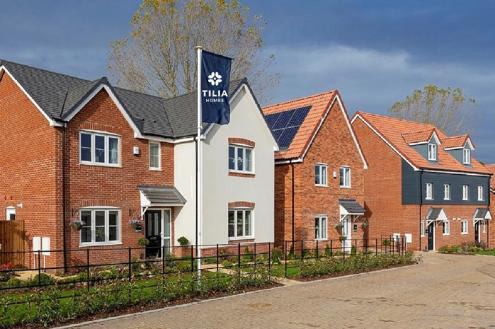17 November 2021
All You Need to Know About 95% Mortgages
With 95% mortgages recently returning to the market for those seeking a new property, house hunters may be confused about what this means for them.
Terry Higgins, The New Homes Group’s Group Managing Director for New Build Mortgage Services, reveals all…
When lockdown measures came into force in 2020, the option of high LTV (loan-to-value) mortgages for house buyers ceased. Concerns about what was going to happen to property prices pretty much led all lenders to pull back as they waited to see how the overall economy was going to fare.
As lockdown restrictions began to ease, we were met with a property boom. House sales bounced back well but demand for high LTV mortgages was low. First-time buyers had taken the opportunity of lockdown to save a decent deposit and ‘next-time’ buyers had seen good house growth, safely securing upwards of a 10% deposit for their next home. The Stamp Duty holiday meant many could use this saving to increase their deposit. At the same time, buyers were making good use of options such as Help to Buy.
Edging towards 2022, the property market is beginning to settle and there is an expectation that high LTV products will be in greater demand next year as buyers look to upsize; especially those whose properties have limited equity. With rental prices increasing, more tenants will feel the urge to own rather than spend their wages on rent. As for first-time buyers, Help to Buy will remain available – but amongst this group there may be individuals who have the benefit of a good joint income, but the home they wish to buy exceeds the regional price cap for the Government-backed equity loan scheme.
As a result, we are observing the likes of Skipton and Nationwide Building Society beginning to offer 95% mortgages on new build properties again. With rates starting from as low as 2.98%, 95% deals are very attractive and I believe they will grow in popularity next year.
Since the economic crisis, we have continued to see historically low increase rates. We all expected the Bank of England base rate to rise on 4 November 2021 – but it didn’t, and it remains at 0.1% for the foreseeable. With rising inflation though, it is only a matter of time before the base rate starts to increase. But don’t be alarmed. Rates remain phenomenally low and that means now is as good a time as any to secure a fixed rate mortgage – especially given the house price increases we have seen in recent times.
In committing to a 95% mortgage, you may be worried about interest rates rising, house prices falling and the potential for negative equity. Whilst relevant, these are all short-term factors and a high LTV product should be viewed in longer terms. My one word of caution would be to avoid much longer-term fixed products. As and when your house value increases, you would likely want to re-mortgage at 90% and have more choice on the products available at that time.
If you are looking to purchase a new home, try to avoid only speaking to your bank as they won’t have sight of everything on the market. Make sure you speak to a good mortgage broker who specialises in new build properties, such as New Homes Mortgage Helpline. They can guide you through the whole process and ensure that you get the right mortgage product for your personal circumstances. They will also look after you throughout the whole journey, right up to exchange of contracts and legal completion
And if you are currently saving for a deposit, my top three tips would be:
1. Acquire a good understanding of your ingoings and outgoings – it’s all too easy to get carried away with contactless and lose track of your day-to-day expenditure
2. Set weekly budgets – it’s surprising how many don’t do this but it can be invaluable in focussing your spending and getting clarity on how much can be set aside week after week.
3. Start saving small – don’t get overwhelmed by thinking, “I need to save £10,000!” Get into the practice from saving will small amounts and then build from there. As they say, tall oaks from little acorns grow






